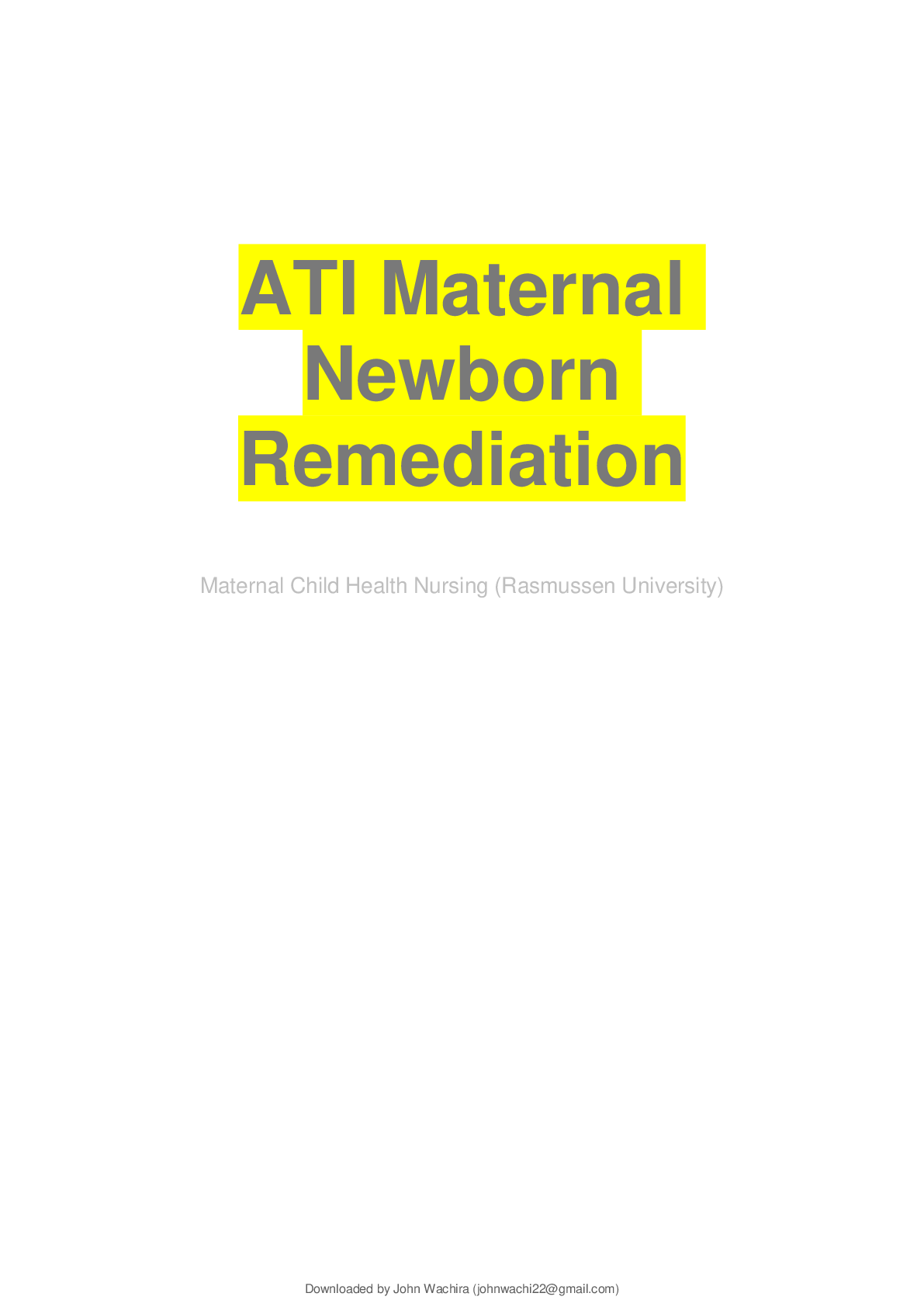
Sophia - Ancient Greek Philosophers - Unit 1 Milestone 1.
Health Care > ATI > ATI Maternal Newborn Remediation (All)
ATI MATERNAL NEWBORN REMEDIATION 1. Management of Care a. Establishing Priorities i. Assessment and Management of Newborn Complications: Priority Finding that Requires Further Assessment ... (Chp 27) • Signs of alcohol withdrawal include jitteriness. Irritability, increased tones and reflex responses, and seizures. A term newborn’s blood glucose should be 30-60mg/dL. Hypoglycemia can bring about poor feeding, jitteriness/tremors, hypothermia, diaphoresis, weak cry, and lethargy. • Other reportable findings are respiratory distress which include tachypnea, nasal flaring, expiratory grunting, retractions, and cyanosis. Newborn infections like sepsis can cause an infant to have temperature instability, suspicious drainage, poor feeding, weak suck, vomiting, diarrhea, hypo or hyperglycemia, respiratory distress, and low BP. • Hyperbilirubinemia includes yellowish tint to skin, sclera, mucous membranes, observe the newborns color for yellowish tint as the skin is blanched, and assess if there is an underlying cause that needs to be fixed. Look for hypoxia, hypothermia, hypoglycemia, and metabolic acidosis. Increased risk for brain damage. Congenital anomalies involve cleft lip/palate and tracheoesophageal fistula, excessive mucous secretions and drooling, periodic cyanotic episodes and choking, distended abdomen. PKU can result in cognitive impairment if untreated, not evident at birth and it’s found in newborn screening. Hypothyroidism: hypothermia, poor feeding, lethargy, jaundice, cretinism. Spina bifida is a protrusion of meninges and/or spinal cord, tufts of hair on the spine. Patent ductus arteriosus is another neonate complication that includes murmurs, abnormal heart rate or rhythm, breathlessness, and fatigue while feeding. • Tetralogy of Fallot is a combination of four congenital abnormalities that has respiratory difficulties, cyanosis, tachycardia, tachypnea, and diaphoresis. Down syndrome, also known as trisomy 21, exhibits oblique palpebral fissures or upward slant of the eyes, epicanthal folds, flat facial profile with a depressed nasal bridge and small nose, protruding tongue, short broad hands with a fifth finger that has one flexion crease instead of two, a deep crease across the center of the palm, hyperflexibility, hypotonic muscles. ii. Medical Conditions: Priority Finding That Requires Further Assessment (Chp 9) • Cervical insufficiency is a painless opening of the cervix that results in delivery of the baby in the 2nd trimester of pregnancy. Some expected findings are pink stained vaginal discharge or bleeding, possible gush of fluid, and uterine contractions w/ expulsion of fetus. The nurse needs to evaluate the client’s support system and if assistance is available for them if they are prescribed activity restrictions or bed rest. Assess the [Show More]
Last updated: 3 years ago
Preview 1 out of 23 pages

Buy this document to get the full access instantly
Instant Download Access after purchase
Buy NowInstant download
We Accept:

Can't find what you want? Try our AI powered Search
Connected school, study & course
About the document
Uploaded On
Oct 18, 2022
Number of pages
23
Written in
All
This document has been written for:
Uploaded
Oct 18, 2022
Downloads
0
Views
158
Scholarfriends.com Online Platform by Browsegrades Inc. 651N South Broad St, Middletown DE. United States.
We're available through e-mail, Twitter, Facebook, and live chat.
FAQ
Questions? Leave a message!
Copyright © Scholarfriends · High quality services·